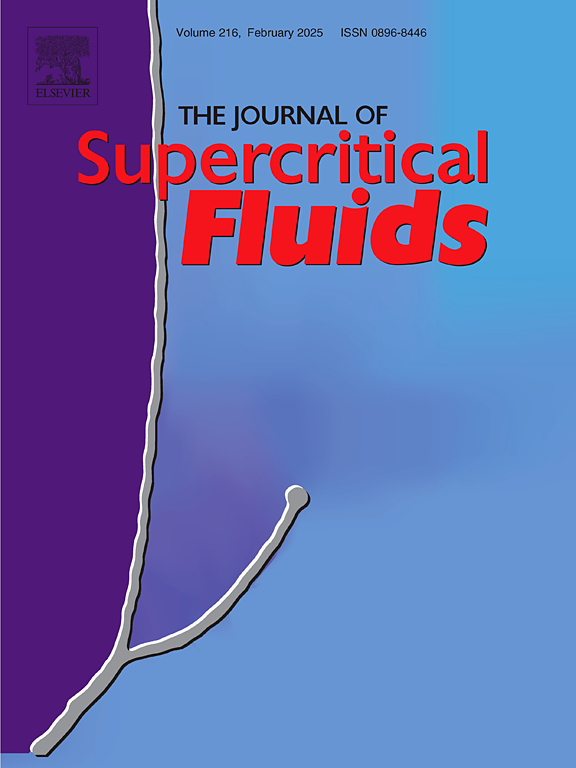通过水热液化利用超临界萃取的可可豆壳残渣生产生物燃料
IF 3.4
3区 工程技术
Q2 CHEMISTRY, PHYSICAL
引用次数: 0
摘要
本研究旨在通过超临界流体萃取和热液液化相结合的工艺,开发一种将残留生物质转化为生物燃料的高效方法。研究分析了使用各种助溶剂的生物质残留物的成分变化,并评估了其生产生物燃料的潜力。与未经加工的原料相比,水热液化后生产出的液体生物燃料的 H C 比值从 1.7 降至 1.6,O C 比值从 0.5 降至 0.2,这表明元素组成的改变有利于生物燃料的生产。值得注意的是,用超临界二氧化碳和乙醇萃取的残渣产量最低,而用二氧化碳和水萃取的残渣能量回收率最高,达到 101.5%。这些研究结果表明,将超临界流体萃取与水热液化相结合是一种环境可持续的高效方法,可极大地推动可持续生物燃料的发展。本文章由计算机程序翻译,如有差异,请以英文原文为准。
Utilizing cocoa bean husk residues from supercritical extraction for biofuel production through hydrothermal liquefaction
This study aimed to develop an efficient method for converting residual biomass into biofuel through a process that combines supercritical fluid extraction and hydrothermal liquefaction. The study analyzed the compositional changes in the biomass residues using various co-solvents and assessed their potential for biofuel production. After hydrothermal liquefaction, the liquid biofuel produced showed a decrease in the H to C ratio from 1.7 to 1.6 and a reduction in the O to C ratio from 0.5 to 0.2, compared to the unprocessed feedstock, indicating a favorable alteration in elemental composition for biofuel production. Notably, residues extracted with supercritical CO2 and ethanol had the lowest yield, while those extracted with CO2 and water achieved the highest energy recovery at 101.5 %. These findings suggest that integrating supercritical fluid extraction with hydrothermal liquefaction is an environmentally sustainable and efficient approach, significantly advancing the development of sustainable biofuels.
求助全文
通过发布文献求助,成功后即可免费获取论文全文。
去求助
来源期刊

Journal of Supercritical Fluids
工程技术-工程:化工
CiteScore
7.60
自引率
10.30%
发文量
236
审稿时长
56 days
期刊介绍:
The Journal of Supercritical Fluids is an international journal devoted to the fundamental and applied aspects of supercritical fluids and processes. Its aim is to provide a focused platform for academic and industrial researchers to report their findings and to have ready access to the advances in this rapidly growing field. Its coverage is multidisciplinary and includes both basic and applied topics.
Thermodynamics and phase equilibria, reaction kinetics and rate processes, thermal and transport properties, and all topics related to processing such as separations (extraction, fractionation, purification, chromatography) nucleation and impregnation are within the scope. Accounts of specific engineering applications such as those encountered in food, fuel, natural products, minerals, pharmaceuticals and polymer industries are included. Topics related to high pressure equipment design, analytical techniques, sensors, and process control methodologies are also within the scope of the journal.
 求助内容:
求助内容: 应助结果提醒方式:
应助结果提醒方式:


